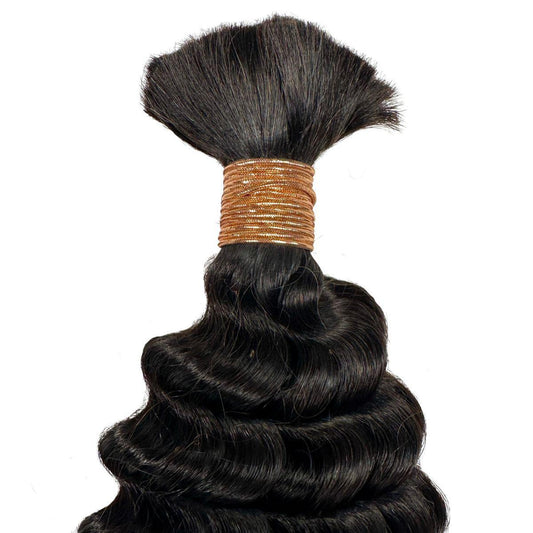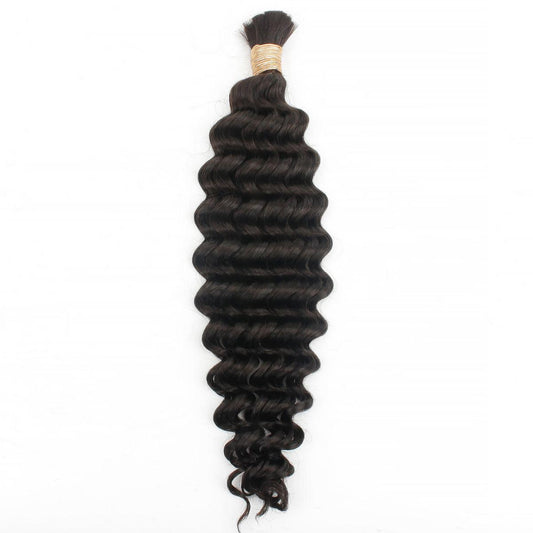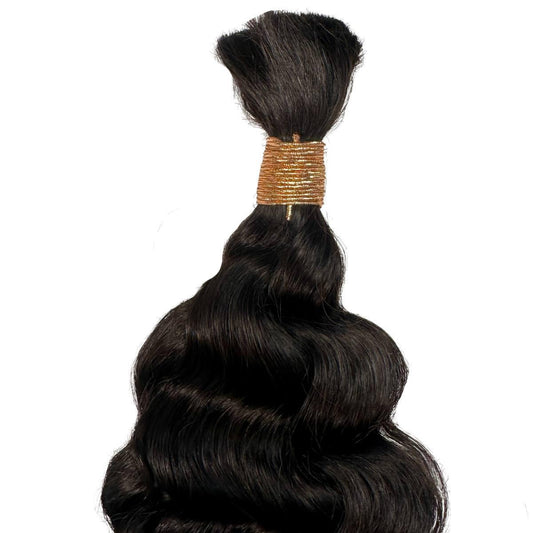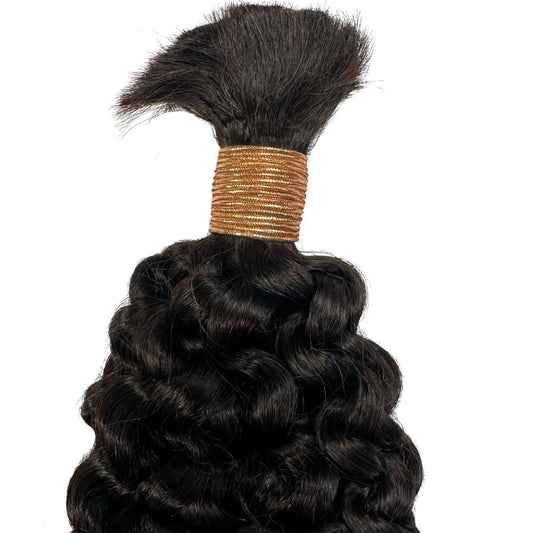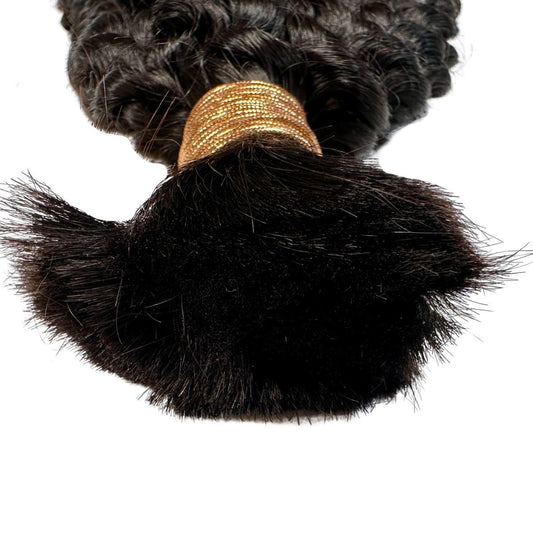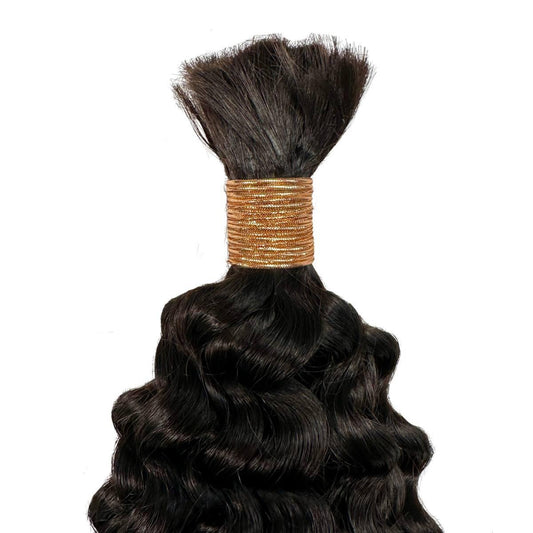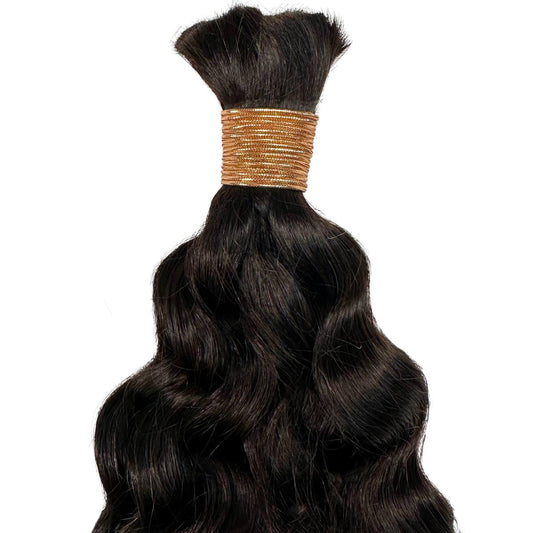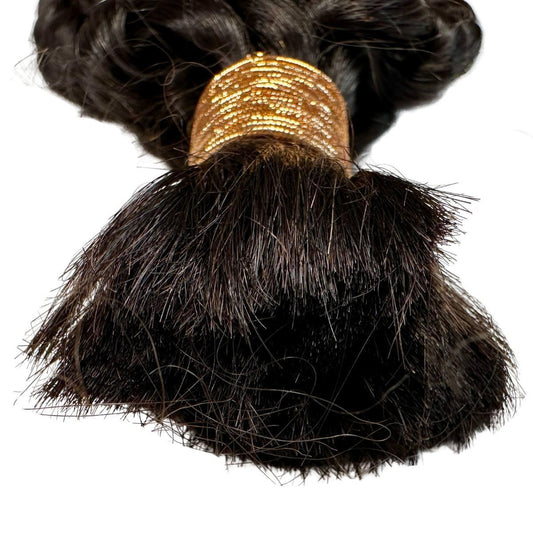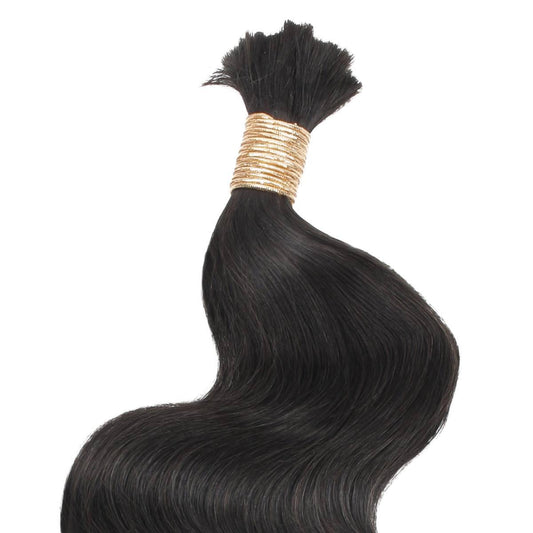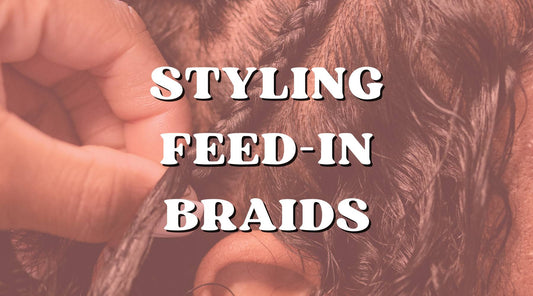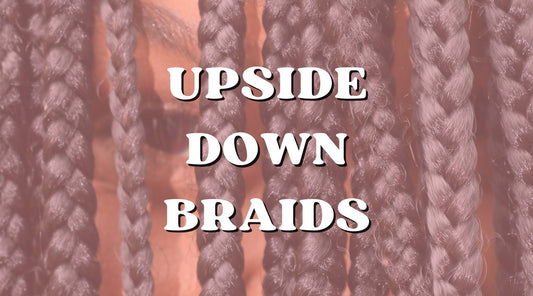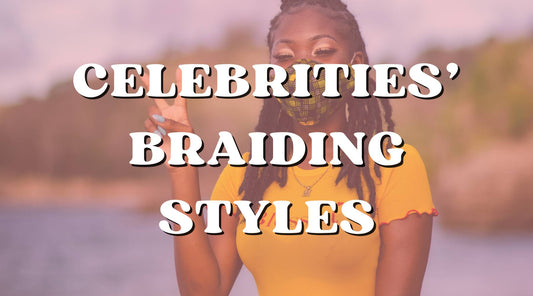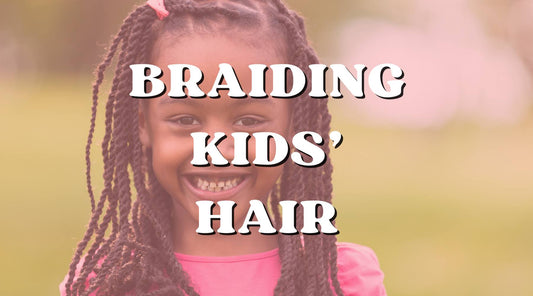1260 Memorial Drive
Atlanta, Georgia 30316
404-458-1330
The Art of Braiding: Various Braiding Techniques Using Human Hair
Mikey MoranKnowing the different braiding techniques to recreate with your human braiding hair can take your braid game from zero to a hundred, whether you are a curious beginner or a seasoned braid lover.
And yes, human braiding hair works as well as those popular synthetic extensions you know for any braiding technique, regardless of how complex or intricate the pattern is.
In this blog post, we talk about all things braiding, including the most common braiding techniques and popular hairstyles that incorporate these techniques you can recreate with your human hair.
We even go a little extra by offering tips and tricks for getting the perfect braids! Let’s get started!

Types of Braiding Techniques
It’s not hard to admit that braids are one of the best inventions ever! From simple to exquisitely crafted patterns, they slay any time, any day.
However, it’s important we get familiar with the braiding techniques that form the basis of every braided hairstyle, and these are the two-strand and three-strand braiding techniques.
Let’s explain further.
Two-Strand Technique
This is, in fact, the easiest and perhaps even the oldest braiding technique. It forms the foundation for most braided hairstyles. It is the perfect technique to recreate, especially for those trying out braids for the first time.
How to Create:
- Divide a section of your natural hair into two parts.
- Attach your human braiding hair and repeatedly cross both strands over each other while maintaining a firm grip.
- Voila, you’ve got a two-strand braid!

Three-Strand Technique
Next is the three-strand technique, which most people know as classic braids. It is the most popular braiding technique used in most professional braiding services.
How to Create:
- Divide a section of your natural hair into three equal parts.
- Attach your human braiding hair and start by crossing the right over the middle, then the left section over the middle.
- Repeat the process until you get your desired length; just like that, you’ve recreated a three-strand braid.

Popular Braiding Styles You Can Make with Human Braiding Hair
Now that you understand the most important braiding techniques, let’s explore some popular braiding hairstyles you can recreate with your human braiding hair using any of the techniques we discussed.
Cornrows
Cornrows are easily one of the most elegant braided hairstyles. Whether you are going for a simple or sophisticated pattern, you simply cannot go wrong with cornrows.
They mostly involve braiding the hair very closely to the scalp using either natural hair or braiding extensions.
How to Create:
- Create straight-lined sections all through your hair.
- Grab your human braiding hair and recreate the three-stranding technique, ensuring the braid is tight against the scalp.
- Ensure the braids remain in the straight line you created, beginning from your forehead to the nape of your neck.
Box Braids
Another popular braided hairstyle you can recreate with your human braiding hair is the infamous box braids.
These single, voluminous, protective hairstyles are especially a favorite among celebrities and those who love a simple yet highly stylish look. The best part? They are incredibly versatile and can be styled in different ways!
How to Create:
- Divide your hair into square-shaped sections.
- Add your human braiding hair to each section, recreate the three-strand technique, and viola—you’ve got a nice box braid!

Fulani Braids
Are you looking to create something more sophisticated? Then Fulani braids are a great option if you want a daring look.
They are characterized by intricate cornrows with a defining middle braid that gives the braids a sectioned look.
How to Create:
- Part your hair into sections, mirroring whatever pattern you want to recreate.
- You can make a distinctive parting in the middle as well.
- Attach your human braiding hair and use the three-strand technique to create cornrows following your desired pattern.
- Braid the distinctive middle part into a large or even smaller cornrow.
- You can also create single-strand braids at both sides of your hair (where your ear is located).
- Accessorize braiding hair with microbeads or cowries for a signature Fulani braid look.
Ghana Braids
Like Fulani braids, these are another elaborate braiding hairstyle you can recreate with your human braiding hair.
They mostly take the form of either horizontal or diagonal cornrows with more intricate patterns.
How to Create:
- Divide your hair into different sections.
- Use the three-strand technique and the feed-in method: Start your braid with a very small section of human braiding hair and gradually add more as you braid.

Boho Braids
We all know if there is any hairstyle that has won the hearts of many in recent times, Deep Wave Boho Braids take the crown.
Renowned for their looseness with messy curls, this hairstyle is for those who take ‘relaxed and effortlessly chic’ seriously.
How to Create:
- Divide your hair into sections.
- Recreate the two- or three-strand technique as a single braid or cornrow using human braiding hair.
- Leave parts of your braiding hair while weaving each braid to curl later unless you use pre-made boho braids that come already curled.
Micro Braids
As the name suggests, microbraids are incredibly tiny and delicate. Whether as a single braid or in cornrow form, micro braids are an absolute delight, especially when done right.
While we recommend using a professional hairstylist for this type of braid, you can always recreate them independently.
How to Create:
- Divide your hair into really tiny sections.
- Using the two-strand or three-strand technique, braid each section into a single braid or close to the scalp.
Tips And Tricks for Getting the Perfect Braids with Human Braiding Hair
Armed with braided hairstyles you can recreate for the ultimate stylish look, below are helpful tips and tricks to ensure you get the best out of your braids.
- Although often overlooked, ensuring your scalp is clean and well-moisturized is the first step towards getting the perfect braids.
- Investing in high-quality human braiding hair, such as the Private Label range of bulk human braiding hair, can take your braids from ordinary to extraordinary. The good thing is that they are available in different textures and colors to match your vibe.
- While we encourage you not to braid too tightly, you must also use a firm grip during braiding to get neat and long-lasting braids.
- Styling and accessorizing are vital in elevating your braid game and enhancing your overall look. Styles like side parts, messy buns, ponytails, and half-up/half-down are easy to create. You can also accessorize your braids with hair clips, rings, beads, flowers, and cowries for a unique and stunning look.

Various Braiding Techniques
And there you have it! From braiding techniques to popular hairstyles to recreate with your human braiding hair, we’ve spilled the tea on how to get the best of your braids.
You can kiss goodbye to monotonous hairstyles and achieve braids that will get people’s attention! Want to be one of those who stun with her braids?
We recommend getting the Private Label range of bulk human braiding hair for the best results.
We assure you that your braids will stand out for their appearance and quality! From water waves and raw Indian wavy to deep waves in colors like blonde, Auburn, burgundy, copper, and Honey Blonde Braiding Hair, it comes in different textures and colors, all aimed at giving your braided hairstyles the ‘facelift’ they deserve.
Still unsure how to get started? You can always visit any Private Label Store nearby for additional advice!

